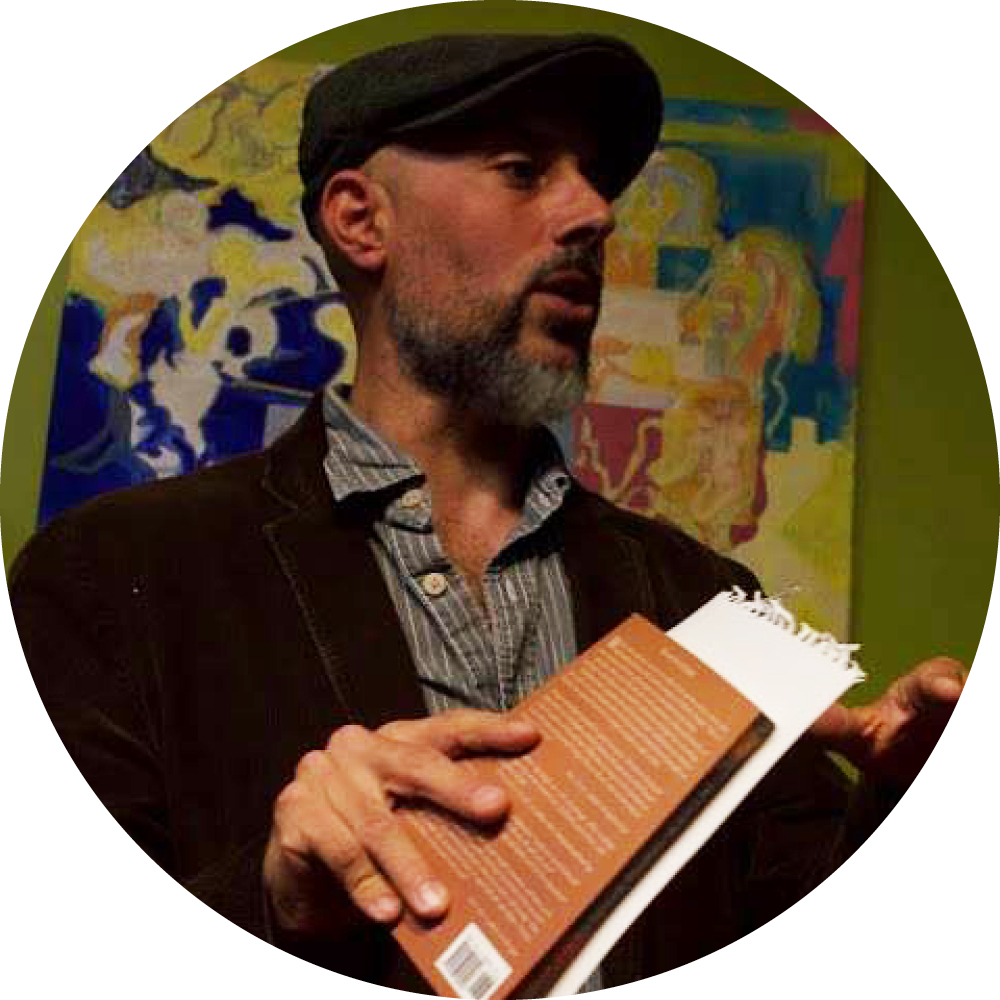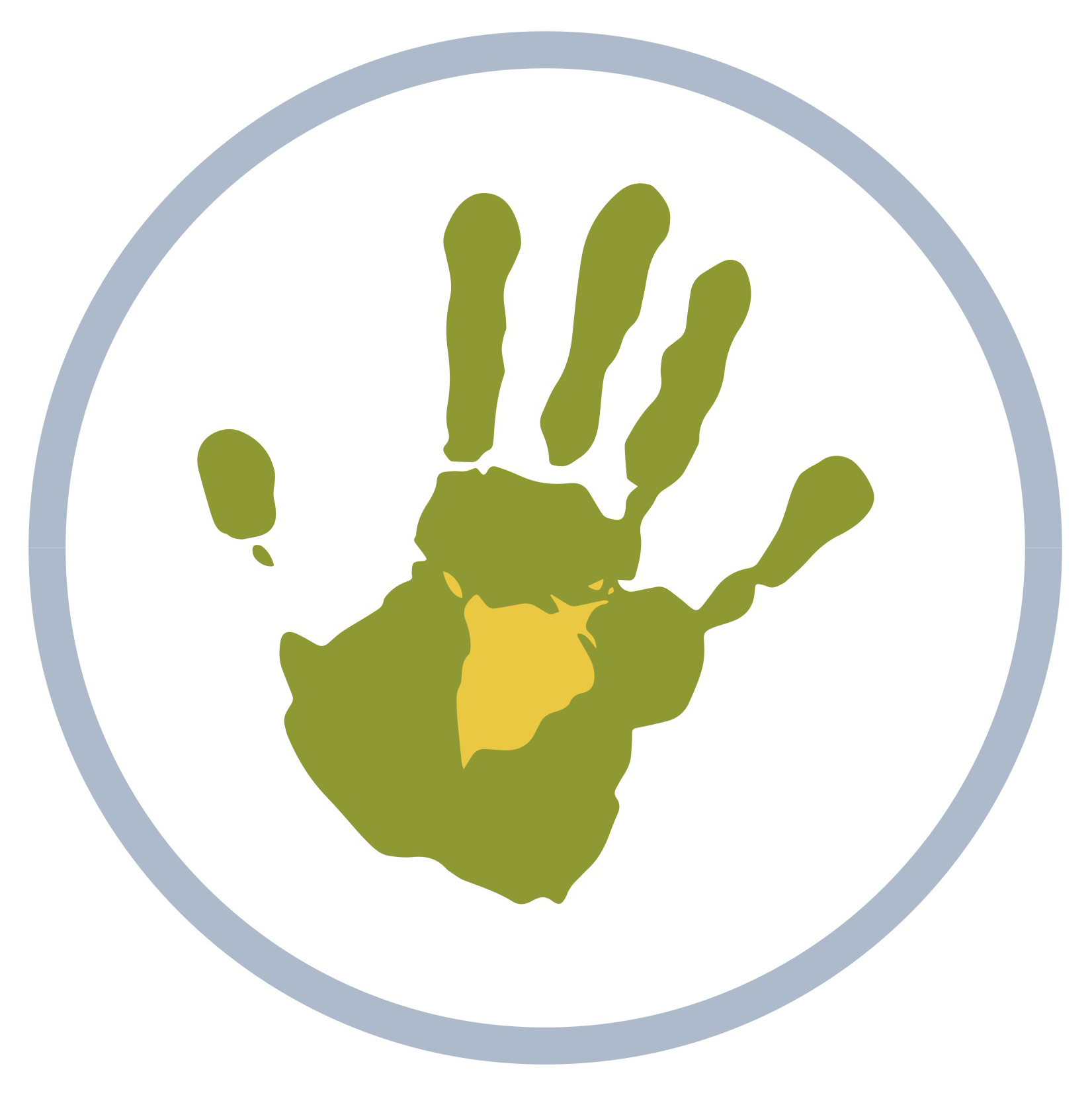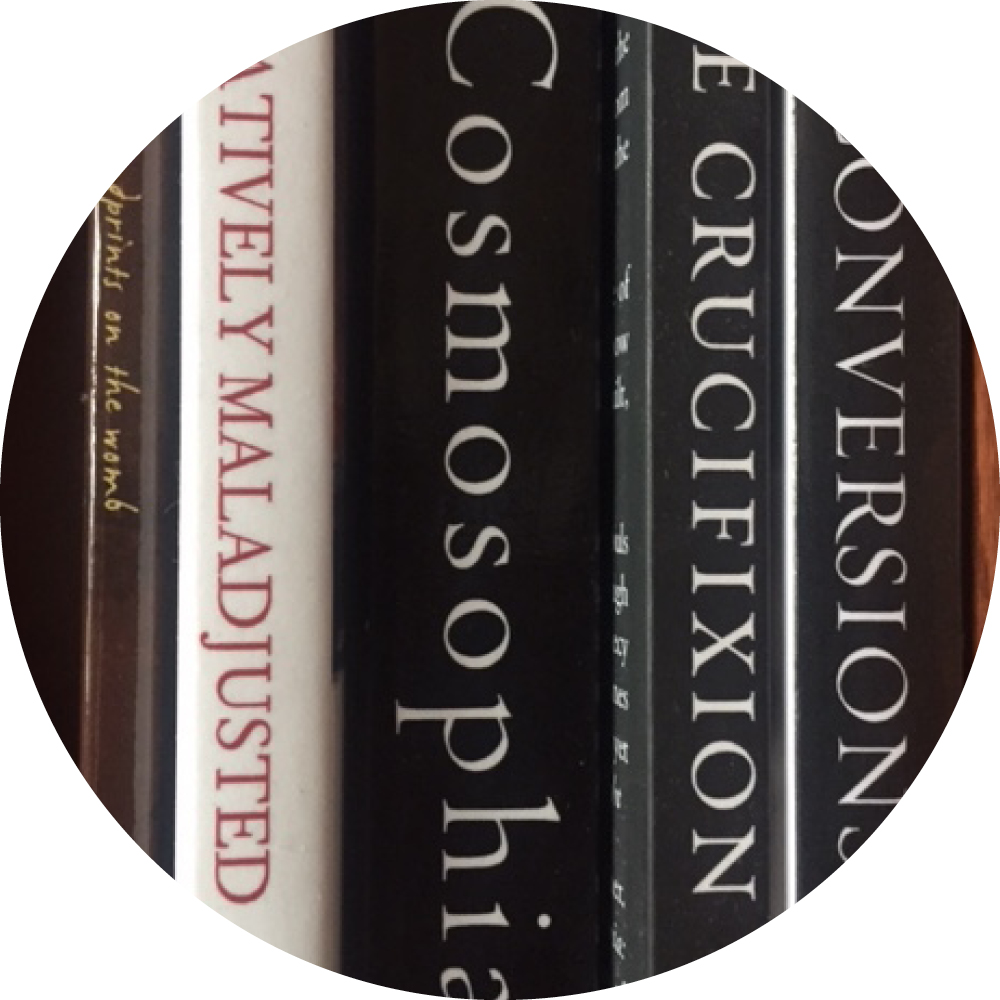The Mowed Meadow:
An Extended Meditation
By Gail Collins-Ranadive
“Whatever preserves and enhances the meadow in its natural cycles of transformation is good; whatever opposes the meadow or negates it is not good.” – Father Thomas Berry
1
The meadow was mowed this morning sometime between the morning dew and noonday heat. Initially, I blocked out the drone reverberating through the neighborhood. But now I am standing on the edge of the field where a vibrant ecosystem once bloomed and buzzed amid red-orange Indian paintbrush.
All that’s left are clumps of death, drying to straw in the summer afternoon sun.
An inexplicable sense of betrayal roots me to the spot, and I am my 10-year-old self again, watching a bulldozer clear out the vacant lot dotted with trees and weeds that we children had secretly claimed. It was our open space, apart from the chaotic confusion and congestion of the veterans’ housing project where we all lived crammed in together. Of course, no one knew what the spot meant to us, so how could we begin to speak up for that special, singular place of suburban wilderness?
Besides, what could we have said back then to counter our parents’ excitement that a pharmacy and convenience store was locating in a neighborhood where the men drove the family car to work, leaving us to bike or walk for whatever we needed during the week…or simply do without?
Back then was before I became a psychiatric nurse who understood that, above and beyond pills, people need natural spaces for optimal mental health.
Back then was before I became an interim minister co-creating ‘seasonal walks’ in each congregation I served because I knew that people need Nature to feed their spirits.
Thus, back then I was voiceless, and powerless to protect what I have always intuitively known to be the Baseline of Life.
In my perfect world, independent red, white, and blue shoots would boldly declare their inalienable right to Life, regardless of any usefulness to humans.
2
The meadow was mowed this week. I rummage through the stubble until I find one scarlet spear of Indian paintbrush bowed over; I gently straighten its stem until it is upright again.
While my younger-self clings to the hope that the meadow will naturally rejuvenate itself, my elder-self wonders whether as young children we are the reinvented humans that Thomas Berry was calling for with his claim that:
The historical mission of our times is to reinvent the human – at the species level, with critical reflection, within a community of life-systems, in a time-developmental context, by means of story and shared dream experience.
For as children, we already know in our bones that we are part of, not apart from, the wider community of planetary Life.
And that intuitive childhood knowing has been reaffirmed from my subsequent life experiences as a mother of two, the author of two children’s books, a volunteer educator, and as writer-in-residence for four combined fifth grade classes as they planned their field trip to the Grand Canyon.
When I first met with the children I handed out notebooks the size of smart phones, then sent them out into their Las Vegas schoolyard to simply be mindful.
It was their passport into a magic kingdom, one in which they were not princes or princesses, but part of the larger pageant that they were to record in their tiny notebooks:
“It is hot. I see mountains. I feel wind. I smell fresh air. It is quiet outside.” – Guadalupe
“There is a light breeze on my skin. The sun is hot on my skin. I sit on prickly grass. There’s a pigeon soaring, birds chirping, insects flying, and dandelions dancing in the breeze, a cloudless blue sky and a fresh water smell.” – Emily
“There are mountains: I wonder how long it took for the mountain I am looking at to form. That mountain represents life on earth. There’s lots of nature, and birds tweeting. The grass feels soft enough to jump on like a pillow. I can see bugs in the grass with the tall dandelions moving in the wind.” – Hannah
“The classroom feels trapped and outside I feel free. In the room when I look up I see lights; when I look in the sky I see clouds. Inside it feels like the walls are closing in but outside there is space. The sun feels good. The lights don’t make me feel alive. Outside it feels like I can do anything, but inside I feel like I am in jail. Out here there is grass, a breeze, lots of smells, and I can hear a lot of different things.” – Jalen
“When I am outside I see not just trees and bushes, I see birds and their nest. I feel relaxed and not pestered. The day is cool and calm. A slight breeze is blowing that is nice at times.” – Jimmie
For ‘homework,’ they were to do likewise in their own backyards. Thus, by the time they arrived at the Canyon, they were ‘primed.’
“It looks a lot better here than in my imagination; it has many colors and layers. It’s amazing how much a river can do to land. It’s really cold and since the elevation is high we’re partly in a big cloud. The sun is shining on the rocks and it makes it look like the heavens are shining on this beautiful wonder. The color of the rocks is changing and kind of turning golden. Some rocks are scarlet instead of red. The river is turquoise. As the sun sets, the canyon is turning darker and darker but some colors are shining. It looks beautiful and has the colors of the sky. My body takes it all in emotionally. I don’t cry but I see it seems like heaven. The best thing on earth is earth. Everything is wonderful when it is earth.” – Hannah
“It is huge, cold, has lots of layers in different colors: it looks like a skateboard ramp. It has different shapes and sizes. It is deep and the clouds look like they are falling into the canyon. Being here is exciting. The Canyon is enormous. The colors look like a painting.” – Palomar
“I did not expect how picture perfect it is.” – Jimmie
But then something else began to stir in their awareness …the human impact on this priceless place. The haze over the Canyon decreasing the visibility by several miles came from the coal-fired power plant that supplied their school’s electricity. The river at the bottom of the Canyon was Rocky Mountain snowmelt drained by multiple desert cities, thus dropping the water levels in Lake Mead before it got to their home faucets. And the California condor that had been snatched from edge of extinction was now being poisoned while eating the shiny lead bullets left in the carcasses of legally hunted large animals.
Such growing realizations can subvert the very cultural conditionings that Thomas Berry claimed we need to revisit.
And set-aside public places can provide space for this critical thinking to take shape. Is that the real hidden agenda behind the relentless political efforts to diminish public lands at the hands of private profit from ranching, grazing, mining, fracking and resort development?
Does diminishing open space also serve to diminish open ideas, insights, imagination, interconnection, perspective, i.e. human consciousness and collective wisdom?
For point of fact, Berry first encountered ‘his’ meadow as a young boy of eleven, when his family moved out to the edge of their North Carolina town. As he described it in his book, The Great Work, the unfinished house was on an incline above a small creek, and across the creek was a meadow of white lilies rising above the thick grass. A magic moment, this experience gave to my life something that seems to explain my thinking at a more profound level than almost any other experience I can remember. It was not only the lilies. It was the singing of the crickets and the woodlands in the distance and the clouds in a clear sky.
“It was not something conscious that happened just then. [But] this early experience has become normative for me throughout the entire range of my thinking.”
3
The meadow was mowed this month. But unlike in previous years, this time it happened after the summer solstice. By then the field was tall with weeds and lush with wildflowers and I was daring to hope that THIS year it would be left alone. But apparently in the distant past there was a wildfire out here, so now neighbors push for this mowing, especially those in the newest mega-mansions rimming the meadow.
In another year, right after the Paintbrush had poked up in late spring, my partner and I tried to ‘save’ one. Two elders at risk of being branded as eco-terrorists for defying the powers that be, and ‘armed’ with a backpack and a trowel, we dug up and transplanted a singular ‘brush.’ Of course it didn’t make it in our backyard: it needed its entire eco-system in order to survive. The implicit message here is that ‘so do we.’
Yet our climate-change-denying political systems are propelling us towards the sixth mass extinction that will include us. Despondent, I frantically search for the singular spear of Indian Paintbrush that I up-righted last week. While it remains elusive, I notice other life reappearing, in particular pink tinged tiny daisy-like blooms: the day’s eyes! Together we’ll witness the bugs coming back. Can butterflies be far behind?
Hope teases then taunts me, reflecting my climate activism roller-coaster ride. We seem to almost reach some pinnacle of success, then either get pushed backwards into the misinformation from where we started the climb, or plunge over the top and down into yet another morass of political corruption, media corporatism, and public complacency.
In my meadow meditations, I hold ‘in the light’ the hope that one day soon this ‘empty’ space will not be mowed for the convenience of humans, and instead left to simply be.
Meanwhile, my money is both literally and legally on the group of young people who are currently suing the government for not keeping faith with its Constitutional mandate to protect the commons for the coming generations.
Although unable to vote, they are not as voiceless as I once was. Now I manage a Facebook group of eco-elders who signed onto the amicus brief on their behalf through Our Children’s Trust, a nonprofit ‘advocating for urgent emissions reductions on behalf of youth and future generations by spearheading a federal, state, local, and international human rights and environmental justice campaign to establish the legal right to a healthy atmosphere and a stable climate.’
Still, it hurts my heart that today’s children feel compelled to pressure our government over its complicity in climate change and species extinction because grownups have failed to.
Now as I wander over the regenerating meadow, I worry that some day it simply won’t come back; pesticides have been sprayed along the path beside it.
In my perfect world, independent red, white, and blue shoots would boldly declare their inalienable right to Life, regardless of any usefulness to humans.
Yet this insignificant little suburban meadow is exactly the right size for a drilling pad and could thus take its place amid the other 25,000 oil and gas well pads popping up like poison mushrooms along the Front Range. Because this whole area was once a vast inland sea, oil, gas, and coal lie buried beneath our feet and throughout much of Colorado. The historical boom/bust mindset of the American West drives the current frenzy for the very fossil fuels that we have to leave in the ground if we want to sustain a habitable planet.
It’s becoming increasingly clear that we the people need to withdraw our foot from the neck of the natural world so that it can renew itself, and with it, us.
4
The meadow was mowed repeatedly this summer. But whenever stalks of Indian paintbrush shoot up through the stubble, I think of Aldo Leopold’s land ethic that ‘changes the role of homo sapiens from conqueror of the land-community to plain member and citizen of it.’
Like the Indian Paintbrush, this ethic has spread ‘underground’ to reappear via Thomas Berry, and now it rises again in the newest insights by famed biologist E.O. Wilson, who has calculated that the only way humanity can stave off the coming mass extinction that will parallel what happened to the dinosaurs 65 million years ago is to set aside a half the earth for the other than human species.
In my meadow meditations, I hold ‘in the light’ the hope that one day soon this ‘empty’ space will not be mowed for the convenience of humans, and instead left to simply be.
But meanwhile, as I stare out over the devastated meadow from which I have just retrieved a dying severed stalk of Indian paintbrush, I renew my resolve to fiercely protect what I can for as long as I am able… not only on behalf of that inner child who lost her sacred space so many years ago, but for today’s children of all the species across the planet. Amen.
About The Author
Gail Collins-Ranadive
Over her lifetime Gail Collins-Ranadive has been a psychiatric nurse, a military wife, a private pilot, a children’s writer in residence, a religious educator, a writing teacher, a workshop facilitator, an adjunct professor, a retreat leader, an ordained minister, and an environmental activist. She has two daughters and five grandchildren, all on the east coast. Her books include If You’d Been Born in India and Hopi Birth Morning (for children), plus Finding the Voice Inside, Writing as a Spiritual Quest for Women; Light Year, A Seasonal Primer for Spiritual Focus; Chewing Sand, An Eco-Spiritual Taste of the Mojave Desert; Inner Canyon, Where Deep Time Meets Sacred Space; and Nature’s Calling, the Grace of Place. Poems and essays have appeared in a variety of publications. She currently hosts the Environmental Column for The Wayfarer Magazine. She and her partner winter in Las Vegas and summer Denver, where they get to work on climate issues and actions in both places. Retiring early in order to focus full time on her writing, she has three more manuscripts in process. Her website is www.gailcollinsranadive.com.
Re-sources
Re-Imagining Education

Empowering educators to take a deeper look at the stories told in our schools and to re-imagine them in transformative and
nurturing learning spaces.
Learning Opportunities

Classes, workshops, and lectures that help to empower people to re-imagine who they are and their place in the world.
CWP

The Chicago Wisdom Project offers a alternative to the industrial and corporate models of education that have become increasingly prevalent in the American educational landscape.

